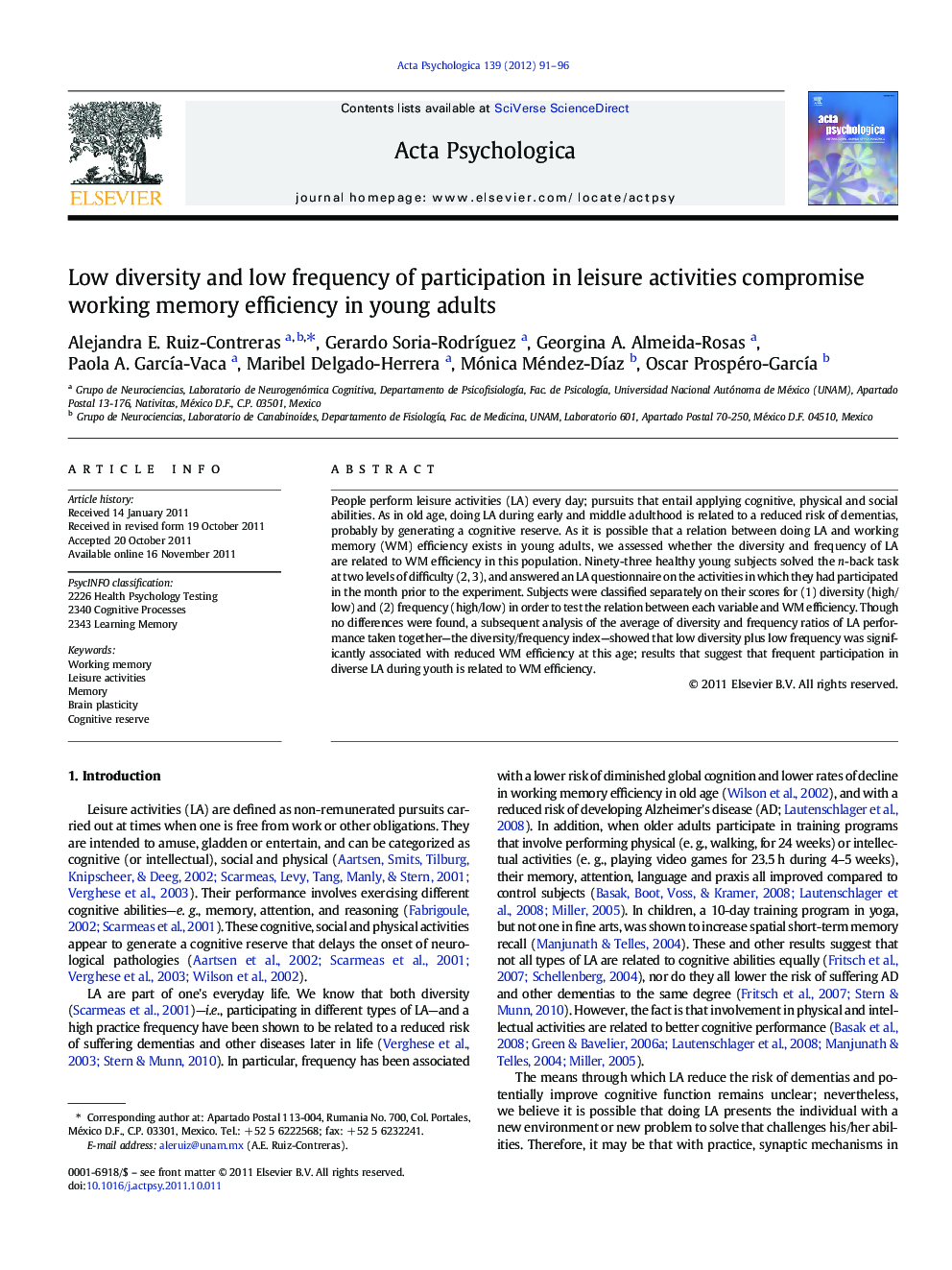| Article ID | Journal | Published Year | Pages | File Type |
|---|---|---|---|---|
| 920097 | Acta Psychologica | 2012 | 6 Pages |
People perform leisure activities (LA) every day; pursuits that entail applying cognitive, physical and social abilities. As in old age, doing LA during early and middle adulthood is related to a reduced risk of dementias, probably by generating a cognitive reserve. As it is possible that a relation between doing LA and working memory (WM) efficiency exists in young adults, we assessed whether the diversity and frequency of LA are related to WM efficiency in this population. Ninety-three healthy young subjects solved the n-back task at two levels of difficulty (2, 3), and answered an LA questionnaire on the activities in which they had participated in the month prior to the experiment. Subjects were classified separately on their scores for (1) diversity (high/low) and (2) frequency (high/low) in order to test the relation between each variable and WM efficiency. Though no differences were found, a subsequent analysis of the average of diversity and frequency ratios of LA performance taken together—the diversity/frequency index—showed that low diversity plus low frequency was significantly associated with reduced WM efficiency at this age; results that suggest that frequent participation in diverse LA during youth is related to WM efficiency.
► Doing leisure activities (LA) delays neurological pathologies in older adults. ► The diversity and frequency of LA do not affect working memory (WM) in young adults. ► At an early age, low diversity & freq. of LA reduces WM efficiency in young adults.
